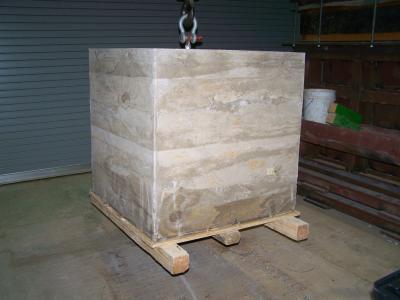Sep 30 2009
Researcher develops innovative construction material that 'rises from the ash'
Dr. Erez Allouche, assistant professor of civil engineering at Louisiana Tech University and associate director of the Trenchless Technology Center, is conducting innovative research on geopolymer concrete and providing ways to use a waste byproduct from coal fired power plants and help curb carbon dioxide emissions.
Inorganic polymer concrete (geopolymer) is an emerging class of cementitious materials that utilize "fly ash", one of the most abundant industrial by-products on earth, as a substitute for Portland cement, the most widely produced man-made material on earth.
 This is a 5,000 lb. geopolymer concrete block cast using fly ash
This is a 5,000 lb. geopolymer concrete block cast using fly ash
Portland cement production is a major contributor to CO2 emissions as an estimated five to eight percent of all human-generated atmospheric CO2 worldwide comes from the concrete industry. Production of Portland cement is currently toping 2.6 billion tons per year worldwide and growing at 5 percent annually.
Geopolymer concrete has the potential to substantially curb CO2 emissions, produce a more durable infrastructure capable of design life measured in hundreds of years instead of tens, conserve hundreds of thousands of acres currently used for disposal of coal combustion products, and protect aquifers and surface bodies of fresh water via the elimination of fly ash disposal sites.
In comparison to ordinary Portland cement (OPC), geopolymer concrete (GPC) features greater corrosion resistance, substantially higher fire resistance (up to 2400° F), high compressive and tensile strengths, a rapid strength gain, and lower shrinkage.
Perhaps Geopolymer concrete's greatest appeal is its life cycle greenhouse gas reduction potential; as much as 90% when compared with OPC.
This technology, along with other important research being conducted to meet future energy needs, will be highlighted at Louisiana Tech will feature this technology at its Energy Systems Conference on November 5 at the Technology Transfer Center in Shreveport.
Source: http://www.latech.edu/